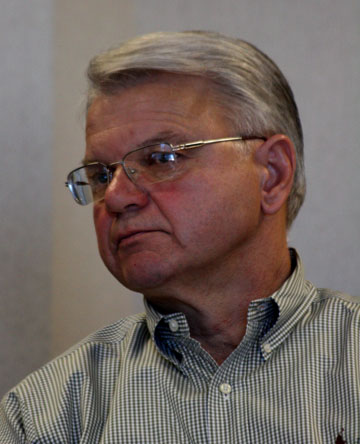WHY THE WIND INDUSTRY IS FULL OF HOT AIR AND COSTING YOU BIG BUCKS
By Robert Bryce,
Via www.foxnews.com
December 20, 2011
A review of the $9.8 billion in cash grants provided under section 1603 of the American Recovery and Reinvestment Act of 2009 (also known as the federal stimulus bill) for renewable energy projects shows that the wind energy sector has corralled over $7.6 billion of that money. And the biggest winners in the 1603 sweepstakes: the companies represented on AWEA’s board of directors.
The American Wind Energy Association has begun a major lobbying effort in Congress to extend some soon-to-expire renewable-energy tax credits. And to bolster that effort, the lobby group’s CEO, Denise Bode, is calling the wind industry “a tremendous American success story.”
But the wind lobby’s success has largely been the result of its ability to garner subsidies. And those subsidies are coming with a big price tag for American taxpayers. Since 2009, AWEA’s largest and most influential member companies have garnered billions of dollars in direct cash payments and loan guarantees from the US government. And while the lobby group claims to be promoting “clean” energy, AWEA’s biggest member companies are also among the world’s biggest users and/or producers of fossil fuels.
A review of the $9.8 billion in cash grants provided under section 1603 of the American Recovery and Reinvestment Act of 2009 (also known as the federal stimulus bill) for renewable energy projects shows that the wind energy sector has corralled over $7.6 billion of that money. And the biggest winners in the 1603 sweepstakes: the companies represented on AWEA’s board of directors.
An analysis of the 4,256 projects that have won grants from the Treasury Department under section 1603 over the past two years shows that $3.37 billion in grants went to just nine companies — all of them are members of AWEA’s board. To put that $3.37 billion in perspective, consider that in 2010, according to the Energy Information Administration, the total of all “energy specific subsidies and support” provided to the oil and gas sector totaled $2.84 billion. And that $2.84 billion in oil and gas subsidies is being divided among thousands of entities. The Independent Petroleum Association of America estimates the US now has over 14,000 oil and gas companies.
The renewable energy lobby likes to portray itself as an upstart industry, one that is grappling with big business and the entrenched interests of the hydrocarbon sector. But billions of dollars in 1603 grants – all of it exempt from federal corporate income taxes – is being used to fatten the profits of some of the world’s biggest companies. Indeed, the combined market capitalization of the 11 biggest corporations on AWEA’s board – a group that includes General Electric and Siemens — is about $450 billion.
Nevertheless, the clock is ticking on renewable-energy subsidies. The 1603 grants end on December 31 and the renewable-energy production tax credit expires on January 1, 2013. On Monday, AWEA issued a report which predicted that some 37,000 wind-related jobs in the US could be lost by 2013 if the production tax credit is not extended.
But the subsidies are running out at the very same time that a cash-strapped Congress is turning a hard eye on the renewable sector. The collapse of federally backed companies like solar-panel-maker Solyndra and biofuel producer Range Fuels, are providing critics of renewable subsidies with plenty of ammunition. And if critics need more bullets, they need only look at AWEA’s board to see how big business is grabbing every available dollar from US taxpayers all in the name of “clean” energy. Indeed, AWEA represents a host of fossil-fuel companies who are eagerly taking advantage of the renewable-energy subsidies.
Consider NRG Energy, which has a seat on AWEA’s board. Last month, the New York Times reported that New Jersey-based NRG and its partners have secured $5.2 billion in federal loan guarantees to build solar-energy projects. NRG’s market capitalization: $4.3 billion.
But NRG is not a renewable energy company. The company currently has about 26,000 megawatts (MW) of generation capacity. Of that, 450 MW is wind capacity, another 65 MW is solar, and 1,175 MW comes from nuclear. So why is NRG expanding into renewables? The answer is simple: profits. Last month, David Crane, the CEO of NRG, told the Times that “I have never seen anything that I have had to do in my 20 years in the power industry that involved less risk than these projects.”
Or look at E.On, the giant German electricity and natural gas company, which also has a seat on AWEA’s board of directors. In 2010, the company emitted 116 million metric tons of carbon dioxide an amount approximately equal to that of the Czech Republic, a country of 10.5 million people. And last year, the company – which has about 2,000 MW of wind-generation capacity in the US — produced about 14 times as much electricity by burning hydrocarbons as it did from wind.
Despite its role as a major fossil-fuel utility, E.On has been awarded $542.5 million in section 1603 cash so that it can build wind projects. And the company is getting that money even though it is the world’s largest investor-owned utility with a market capitalization of $45 billion.
Another foreign company with a seat on AWEA’s board: Spanish utility Iberdrola, the second-largest domestic wind operator. But in 2010, Iberdrola produced about 3 times as much electricity from hydrocarbons as it did from wind. Nevertheless, the company has collected $1 billion in section 1603 money. To put that $1 billion in context, consider that in 2010, Iberdrola’s net profit was about 2.8 billion Euros, or around $3.9 billion. Thus, US taxpayers have recently provided cash grants to Iberdrola that amount to about one-fourth of the company’s 2010 profits. And again, none of that grant money is subject to US corporate income taxes. Iberdrola currently sports a market cap of $39 billion.
Another big winner on AWEA’s board of directors: NextEra Energy (formerly Florida Power & Light) which has garnered some $610.6 million in 1603 grants for various wind projects. NextEra’s market capitalization is $23 billion. The subsidies being garnered by NextEra are helping the company drastically cut its taxes. A look at the company’s 2010 annual report shows that it cut its federal tax bill by more than $200 million last year thanks to various federal tax credits. And the company’s latest annual report shows that it has another $1.8 billion of “tax credit carryforwards” that will help it slash its taxes over the coming years.
The biggest fossil-fuel-focused company on AWEA’s board is General Electric, which had revenues last year of $150 billion. Of that sum, about 25 percent came from what the company calls “energy infrastructure.” While some of that revenue comes from GE’s wind business, the majority comes from building generators, jet engines, and other machinery that burn hydrocarbons. The company is also rapidly growing GE Oil & Gas, which had 2010 revenues of $7.2 billion. GE Oil & Gas has more than 20,000 employees and provides a myriad of products and services to the oil and gas industry.
GE has a starring role in one of the most egregious examples of renewable-energy corporate welfare: the Shepherds Flat wind project in Oregon. The majority of the funding for the $1.9 billion, 845-megawatt project is coming from federal taxpayers. Not only is the Energy Department providing GE and its partners – who include Caithness Energy, Google, and Sumitomo — a $1.06 billion loan guarantee, as soon as GE’s 338 turbines start turning at Shepherds Flat, the Treasury Department will send the project developers a cash grant of $490 million.
On December 9, the American Council on Renewable Energy issued a press release urging Congress to quickly extend the 1603 program and the renewable-energy production tax credit, because they will “bolster renewable energy’s success and American competitiveness.”
But time is running short. Backers of the renewable-energy credits say that to assure continuity on various projects, a bill must be passed into law by March 2012. If that doesn’t happen, they are predicting domestic investment in renewable energy could fall by 50 percent. A bill now pending in the House would extend the production tax credit for four additional years, through 2017. The bill has 40 sponsors, 9 are Republicans. The bill is awaiting a hearing by the House Ways and Means Committee.
Robert Bryce is a senior fellow at the Manhattan Institute. His latest book is Power Hungry: The Myths of “Green” Energy and the Real Fuels of the Future.
From Massachusetts
MOVING TOWARD CONSENSUS ON TURBINES
By CHRISTOPHER KAZARIAN,
Source: Falmouth Enterprise,
December 20, 2011
In the Weston & Sampson report the cost for decommissioning the turbines and taking them down is estimated to be $700,000, with on-site storage adding $30,000 to that figure. The monthly maintenance fee for the turbines would be $4,500 a month.
The town could, under the proposal, possibly realize as much as $600,000 for the two turbines, if it were to resell them. If a buyer cannot be found, salvage value of the machines would provide the town with much less revenue, an estimated $102,000.
Earlier this year Falmouth hired a consultant to determine if the town could reach consensus with residents on how to deal with the problems of the town-owned wind turbines at the Wastewater Treatment Facility. That consultant, Edith M. Netter of Waltham, concluded that, despite the acrimony over the turbines, a consensus was achievable.
Last night selectmen moved forward with that approach by accepting advice from the Massachusetts Clean Energy Center, which is recommending four firms to facilitate that next step. Those firms, which the state agency selected after issuing a Request for Qualifications, are CLF Ventures of Boston; the Consensus Building Institute of Cambridge; the Meister Consulting Group of Boston; and Raab Associates of Boston.
The Clean Energy Center has provided a review of the firms to selectmen, noting which were best suited for facilitating the process of building consensus on how to deal with the town’s two wind turbines. Selectmen will not make a decision on those firms until their next meeting on Monday, January 9.
Chairman of the Falmouth Board of Selectmen Mary (Pat) Flynn asked for public input on the four finalists to help in choosing the one that will be responsible for facilitating the process of how to select the mitigation option most suitable for the town. The options before selectmen are: to decommission the two turbines; to relocate the turbines elsewhere in town; to make specific changes to the operation of the turbines; or to mitigate the homes impacted by the machines. Weston & Sampson has concluded its analysis of these options, and that report will be posted on the town’s website, under the selectmen’s section, later today.
Residents can also find information related to the four firms the Clean Energy Center is recommending for facilitation here, as well. Nancy A. Hayward of Chase Road, West Falmouth, later asked that a copy of the report also be made available to residents in the Falmouth Public Library’s reference department. The board agreed to her request.
In the Weston & Sampson report the cost for decommissioning the turbines and taking them down is estimated to be $700,000, with on-site storage adding $30,000 to that figure. The monthly maintenance fee for the turbines would be $4,500 a month.
The town could, under the proposal, possibly realize as much as $600,000 for the two turbines, if it were to resell them. If a buyer cannot be found, salvage value of the machines would provide the town with much less revenue, an estimated $102,000.
In addition, Weston & Sampson predicted the town would be responsible for repaying the Massachusetts Renewable Energy Trust the roughly $1 million it received in Renewable Energy Credits for the energy produced by the turbines from 2015 to 2029.
Falmouth would have to cover its debt obligations for the pur- chase of the wind turbines. In the report the town would pay $6.88 million in debt for Wind 1. With relocation Weston & Sampson has estimated the town would require an additional $4.48 million investment. Of that amount roughly $1.5 million would go toward decommissioning of the turbines as well as permitting and site preparation. The remaining money would be needed to cover actual construction costs.
If the town elects to keep the turbines in their current location, it could elect to modify a handful of abutters’ homes. Weston & Sampson mentioned nine homes—four on Blacksmith Shop Road, four on Ambleside Drive and West Falmouth Highway—that were closest to Wind 1 and Wind 2 as ones that should be strongly considered, based upon inspection last month by Harris Miller Miller and Hanson. With proper sound insulation and, in six cases, installation of central air-conditioning, the town would pay roughly $360,000 to modify those nine homes. To extend that strategy to the 25 closest homes would cost Falmouth roughly $1 million.
Another option could be noise barriers, although Weston & Sampson noted that these are not only rare, but also expensive and would require the removal of a number of trees in the area.
As an example of the significant cost of the noise barriers Weston & Sampson estimated that to construct a 41-foot high one to protect the four closest homes to Wind 1 would cost anywhere between $1 million and $2 million. Some of the modfications to the turbine include making operational changes to limit shadow flicker, which is estimated to cost $15,000 per turbine.
Once a facilitator is selected by the board, Ms. Flynn said the neutral consultant would meet with groups of 20 to 40 citizens in confidential interviews or focus groups during the month of January. The purpose of those meetings, Ms. Flynn said, will be to clarify community views on the proposed options in the Weston & Sampson report.
And it would help determine what process, if any, would work to bring people together to discuss mitigation strategies for the wind turbine. If such a process is feasible, selectmen would be apprised of that in the beginning of February by whatever firm is selected to facilitate the consensus-building approach. Over the next two months the board would then work with the public before making a recommendation to Town Meeting in April about how to proceed with the town-owned wind turbines.
FROM THE PUBLIC SERVICE COMMISSION OF WISCONSIN
FOR IMMEDIATE RELEASE
December 19, 2011
[Download a copy of this document by clicking here]
Highland Wind Farm, LLC Files CPCN Application with Public Service Commission
Madison, WI—The Public Service Commission of Wisconsin (Commission) has received an application from Highland Wind Farm, LLC to build a 102.5 megawatt wind project located in the townships of Forest and Cylon, St. Croix County, Wisconsin.
When the application is deemed complete, the Commission will have up to 360 days to make a decision on the application.
An electric generation project of 100 megawatts (MW) or greater requires a Certificate of Public Convenience and Necessity (CPCN) from the Commission.
The Commission has siting jurisdiction over all wind energy systems 100 MW or larger and over utility-owned wind energy systems, regardless of size.
A political subdivision (city, town, village, or county) has siting jurisdiction over non-utility wind energy systems smaller than 100 megawatts.
2009 Wisconsin Act 40 made several changes to the state statutes regarding the siting of wind energy systems.
The law retained the jurisdictional split between the Commission and political subdivisions; directed the Commission to write wind siting rules; and stated that a political subdivision may not impose requirements that are more restrictive than those in the Commission’s wind siting rules.
In response, final Wind Siting Rules promulgated by the Commission (PSC 128) were published in the Wisconsin Administrative Register on February 28, 2011, to be effective March 1, 2011.
Currently the rules are not in effect due to legislative suspension.
The Commission and interested parties are currently working to resolve concerns regarding wind siting for non-utility projects under 100 MW.
Because Highland Wind Farm, LLC has planned a project surpassing the 100 MW threshold, the project application will be treated like any other CPCN application received by the Commission; however, the Commission is also statutorily required to “consider whether installation or use of the facility is consistent with the standards specified in the rules promulgated by the commission under Wis. Stats. §196.378 (4g) (b),” meaning the Commission will need to at least consider whether the application is consistent with
the standards in the promulgated, yet suspended, PSC 128 rules.
Once the Commission receives all pieces of an application, the Commission has 30 days to determine whether the application is complete. After a CPCN application is deemed complete, the Commission urges the public to take advantage of the many opportunities to weigh in.
The public is encouraged to read the Commission’s public notification letter, verify interested parties are included on the Commission mailing lists, review the application posted online, ask questions of the Commission staff, submit comments, and testify at hearings.
Information can be found at the Commission’s web site, http://psc.wi.gov, and at local libraries, government offices, clerks’ offices, and within the environmental review documents that will be prepared for the project.
Wis. Stats. § 196.491 describes the procedures related to the issuance of a CPCN. The general application requirements for the CPCN are described in Wis. Admin. Code ch. PSC 111.
An overview of a typical application review process can be found at: http://psc.wi.gov/thelibrary/publications/electric/electric03.pdf.
Documents associated with the Highland Wind Farm application can be viewed on the PSC’s Electronic Regulatory Filing System at http://psc.wi.gov/. Type case numbers 2535-CE-100 in the boxes provided on the PSC homepage, or click on the Electronic Regulatory Filing System button.



